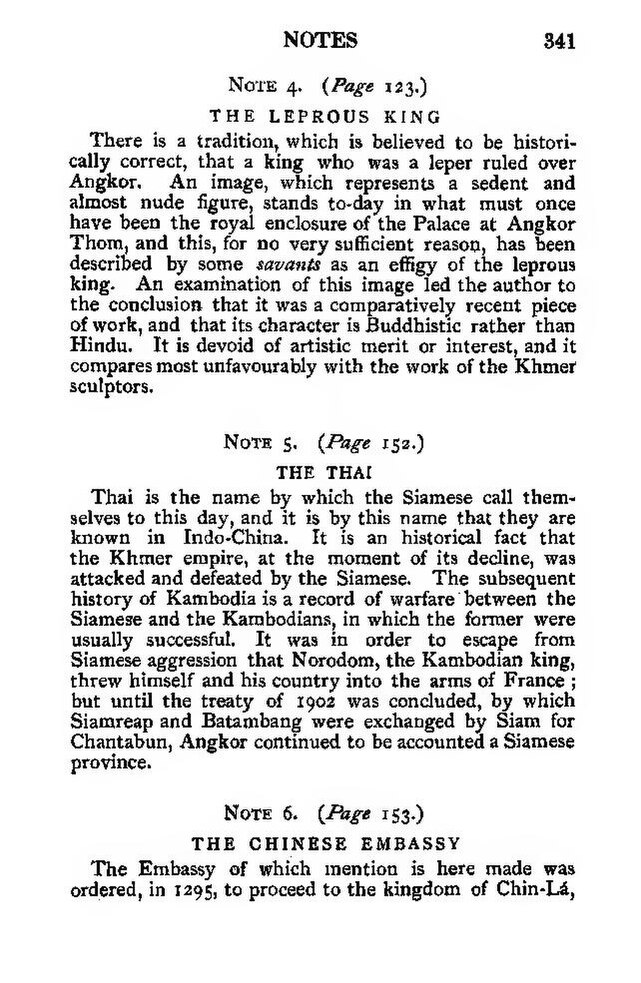Note 4 (Page 123.)
THE LEPROUS KING
There is a tradition, which is believed to be histori- cally correct, that a king who was a leper ruled over Angkor. An image, which represents a sedent and almost nude figure, stands to-day in what must once have been the royal enclosure of the Palace at Angkor Thom, and this, for no very sufficient reason, has been described by some savants as an effigy of the leprous king. An examination of this image led the author to the conclusion that it was a comparatively recent piece of work, and that its character is Buddhistic rather than Hindu. It is devoid of artistic merit or interest, and it compares most unfavourably with the work of the Khmer sculptors.
Note 5. (Page 152.)
THE THAI
Thai is the name by which the Siamese call them- selves to this day, and it is by this name that they are known in Indo-China. It is an historical fact that the Khmer empire, at the moment of its decline, was attacked and defeated by the Siamese. The subsequent history of Kambodia is a record of warfare between the Siamese and the Kambodians, in which the former were usually successful. It was in order to escape from Siamese aggression that Norodom, the Kambodian king, threw himself and his country into the arms of France; but until the treaty of 1902 was concluded, by which Siamreap and Batambang were exchanged by Siam for Chantabun, Angkor continued to be accounted a Siamese province.
Note 6. (Page 153.)
THE CHINESE EMBASSY
The Embassy of which mention is here made was ordered, in 1295, to proceed to the kingdom of Chin-Lá,
